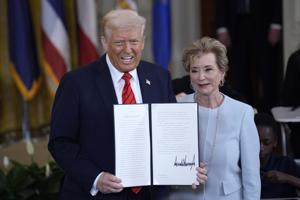The ongoing discourse surrounding language in American education has once again surged to the forefront, particularly in light of political rhetoric challenging established norms. This critical discussion centers on how best to provide equitable learning opportunities for all students, irrespective of their native tongue.
The practical challenges faced by educators daily underscore the vital need for robust support systems. Consider a recent scenario observed in a Washington, D.C. middle school, where a dedicated science teacher welcomed a new student who had recently arrived from Paris. Despite her best efforts, employing hand gestures and scattered Spanish phrases, the teacher encountered a significant language barrier, highlighting the immediate communication hurdles faced by non-English speaking students in mainstream classrooms.
This everyday struggle resonates with a foundational principle of American society: the right to equal educational access. Since the landmark 1954 Supreme Court decision, the nation has theoretically championed educational equity for all, regardless of identity. However, the reality on the ground often reveals persistent disparities, suggesting that true equality in education remains an aspiration rather than a fully realized achievement.
Against this backdrop, the past administration’s stance on educational policies has introduced considerable uncertainty. Former President Donald Trump, alongside figures like Secretary of Education Linda McMahon, has previously signaled intentions that could significantly alter the structure and funding of the Department of Education. Such proposals have historically raised concerns among advocates for specialized programs, including those vital for language minority students.
The potential implications of shifts in federal education policy are profound, particularly for diverse student populations. Any measures perceived as diminishing support for linguistic integration could disproportionately affect immigrant communities and reinforce existing academic achievement gaps. This underscores the delicate balance required to foster an inclusive learning environment for every child.
Bilingual education programs are not merely an accommodation; they are crucial pathways to academic success, cultural preservation, and civic participation. These programs empower students to navigate a new educational system while valuing their linguistic heritage, ultimately enriching the broader societal fabric. They represent an investment in a more inclusive and globally competent future.
Advocates for language rights in education frequently cite the historical trajectory of civil rights in America, arguing that language is inextricably linked to identity and equal opportunity. Upholding these rights is seen as a moral imperative, ensuring that no student is disadvantaged due to their linguistic background.
As the debate continues, the fundamental question persists: how can the United States uphold its commitment to comprehensive educational access for all, ensuring that language differences become bridges to learning rather than barriers? The outcomes of this ongoing conversation will undoubtedly shape the future of countless students and reflect deeply on the nation’s core values.





Leave a Reply